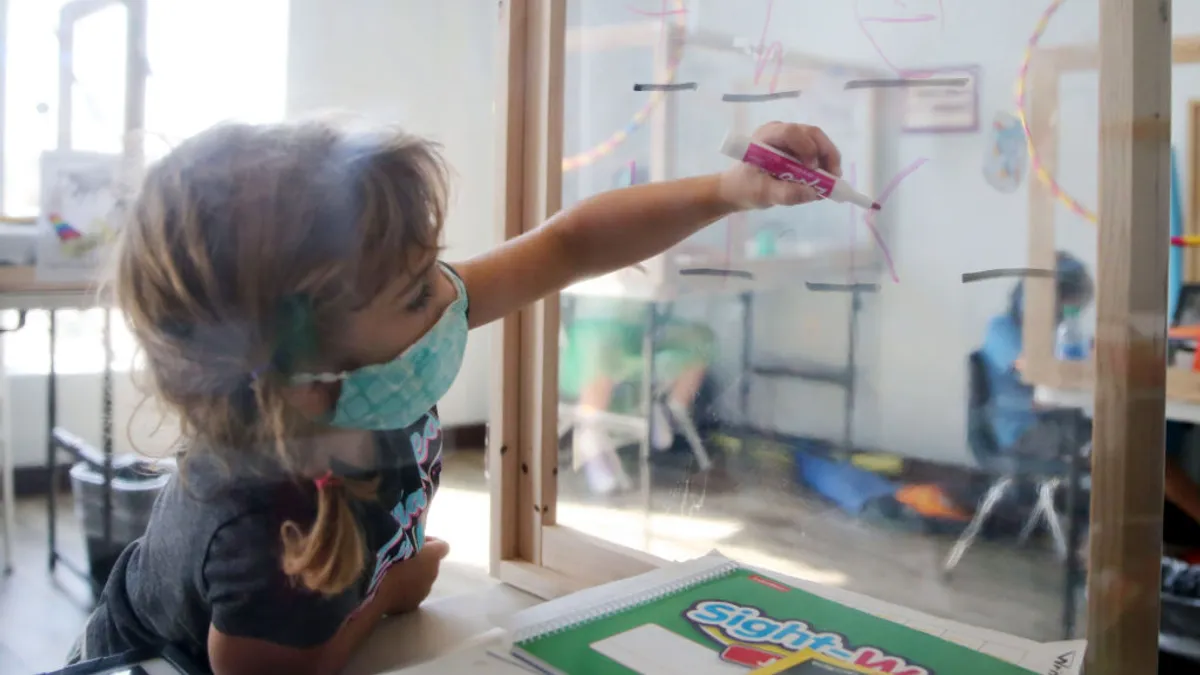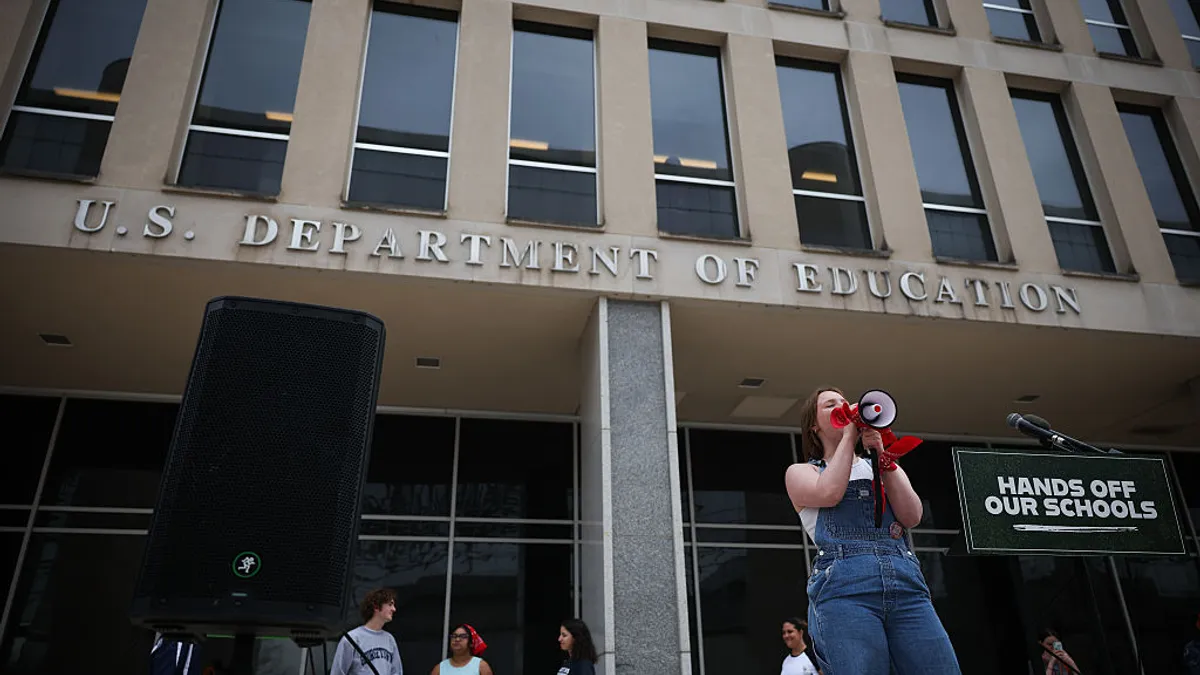As hundreds of thousands of migrant students enroll in U.S. schools annually, districts are responding in a variety of ways to help welcome students to schools, as well as support their academic and social needs once they are enrolled.
The increase in school-based resources for migrant students and their families illustrates the impact national immigration policies have had on schools as the country transitioned away from COVID-19-era restrictions that slowed the arrival of asylum-seekers in the U.S.
Chicago Public Schools said it is working with urgency to enroll newcomer students. It has deployed mobile units to local police stations and other temporary shelters in recent weeks to ensure all children are provided access to services.
The district also launched a pilot welcome center to streamline delivery of services for a specific area of the city. It organized transportation from shelters in other parts of the city to the welcome center in an effort to serve families while still ensuring that children are enrolled in schools near their shelters, according to the district.
As of Aug. 28, the district had enrolled nearly 1,200 newly arrived students in the past two months. It expects to enroll another 1,000 English learners over the following couple of weeks, according to an email from the district to K-12 Dive.
Last school year, Chicago Public Schools enrolled about 5,300 new EL students. In a typical school year, about 3,000 new EL students are enrolled, according to the district.
Other parts of the country are also seeing increased enrollments of newcomer students. A June resolution by the Governing Board of the Los Angeles Unified School District said the school system enrolled more than 13,000 international newcomer students in the 2021-2022 school year.
An anticipated challenge
And while only 5% of school superintendents in New York state said they expected an influx of migrant students, 95% said providing instruction for ELs was an anticipated challenge, according to Aug. 31 results of a superintendents survey by the New York State School Boards Association.
Nearly 30% of respondents said their districts would be unable to serve new migrant students with "current or reasonably available resources."
In June, the U.S. Department of Education published an updated toolkit to help schools and communities meet newcomer students' academic, social-emotional and mental health needs. The toolkit offers resources for various situations, such as engaging newcomer families and professional development activities. The Education Department is hosting a webinar on supporting newcomer students on Wednesday at 3 p.m. ET.
Burbio, a data service for K-12 spending and operations, found several hundred mentions of newcomer, immigrant, migrant students and other related terms in a search of spring 2023 school board meeting documents performed at the request of K-12 Dive. Burbio's School Board Meeting Tracker service monitors activity in over 1,500 school districts covering over 50% of the K-12 population on a monthly basis.
Like Chicago Public Schools, several school systems, such as Cobb County School District in Georgia, have created welcome centers to help enroll newly arrived students.
Some districts have added curriculum supports, as well as other programs. California's Desert Sands Unified School District, for instance, created a Migrant Leadership Club to encourage students' self-esteem and college and career readiness.
A report released in May by Policy Analysis for California Education provides the status of newcomer students in the state, including the funding, staffing and instructional challenges. According to the report, there were 151,996 newcomer students in California in 2020–21, which meant 1 in 40 students in the state was a newcomer.
Sam Finn, author of the report, said that given the unique needs of this student population, there are opportunities for distinct English language, social and academic supports.
Newcomer students most often are considered part of the EL student population. The report says the average EL student can speak and understand English and is working to improve their academic language skills. The average newcomer, on the other hand, has highly limited English language skills that may prevent access to instruction and who has additional social-emotional and material needs.
The report also notes that although 80% of California’s EL student population is Spanish speaking, less than half of all newcomer students have Spanish as a home language.
"I want people to know that newcomers are a very large and underserved population of students, perhaps the largest high-needs population in our schools so sparsely addressed by policy, data, instruction and the broader educational discourse," said Finn, a former elementary school teacher. "We have the opportunity to massively improve newcomers' outcomes with relatively modest investments."
The report offers several suggestions targeted for this population, including newcomer-specific instruction, dedicated funding, improved newcomer student data collection and additional planning time for teachers. There should also be a comprehensive enrollment process that includes language assessments and screenings for housing, food, legal aid and mental health needs, the report added.
A bill in the California legislature would require the state education agency to develop guidance regarding requirements, best practices, and available state and federally funded programs for newcomer students. The bill would also require the state to publish an annual report of the number of newcomer students.
Correction: A previous version of this story misidentified the targeted population of students in a proposal for an annual report in California.





















